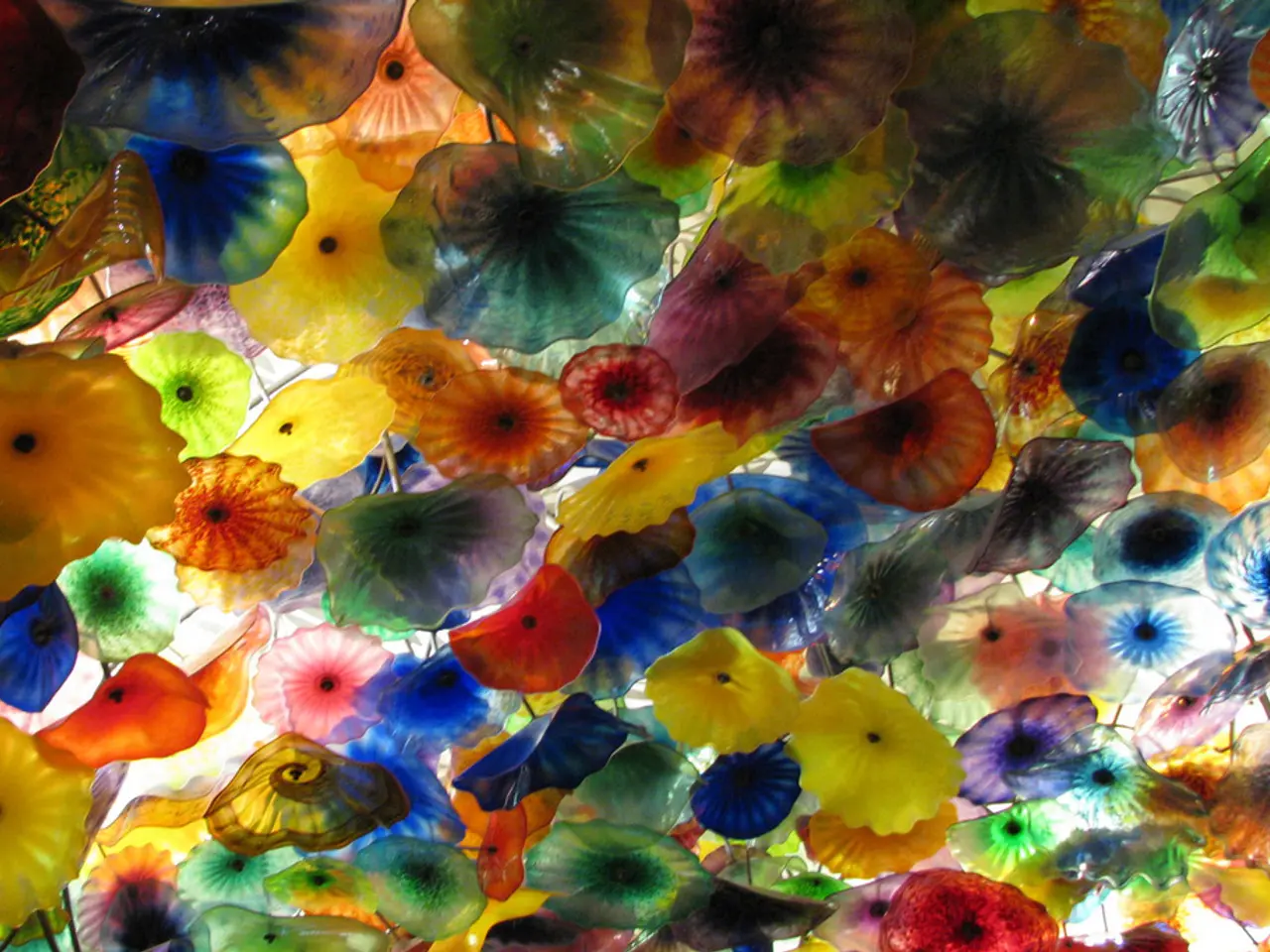Exploring the Potential Impact of Chromatherapy Lighting on Cognitive Creativity
Color therapy, or chromotherapy, is a holistic practice that uses exposure to specific colors of light to influence mood, energy, and well-being. Researchers have been exploring its potential effects on creativity, a crucial aspect of problem-solving and innovation.
A study published in 2009 in Science found that participants exposed to blue performed better on creative tasks. This finding was supported by another study by Christine M. F. Meier and Christoph Randler, published in 2017, which revealed that green can improve performance in brainstorming activities.
Green, associated with growth and balance, may help improve focus and idea generation. Psychologists have found that blue is linked to calmness, openness, and cognitive flexibility, qualities that may encourage creative problem-solving. On the other hand, yellow stimulates optimism and playfulness, potentially sparking imagination.
However, the effects of color exposure may depend on expectation and placebo responses. Colors have symbolic meanings in traditional systems, such as blue representing communication and expression, and yellow symbolizing personal power and creativity.
While these findings support a link between color exposure and creativity, they do not confirm that chromotherapy devices uniquely enhance brain function. Colors alone cannot substitute for skill-building, practice, or lifestyle habits that support creativity.
Experimenting with blue or green-lit spaces may encourage flexible thinking. Combining color-therapy with creative rituals like journaling, music, or meditation can amplify its effects. Chromotherapy provides a ritual structure that primes the brain for a creative mindset.
However, it's important to note that moderation in the use of color therapy is key. Overly intense lighting can cause eye strain or distraction. Lighting intensity and saturation may matter as much as hue - soft, diffused lighting tends to support divergent thinking better than harsh, bright light.
Red often heightens alertness and attention to detail, but may suppress free-flowing creativity by narrowing focus. Conversely, color-therapy light exposure can create an environment more conducive to brainstorming or artistic work.
Alternatives for boosting creativity include mind-wandering, exercise, exposure to nature, and mindfulness practices. While color therapy offers a unique approach, it should be seen as complementary rather than replacement for these evidence-based methods.
Scientific evidence for chromotherapy is modest and often inconsistent. More research is needed to fully understand its potential benefits and limitations in enhancing creativity. Nonetheless, the intriguing findings so far suggest that color therapy could be a valuable tool in fostering a creative environment.
Read also:
- Backed by Scientific Evidence, 11 Strong Arguments for Almond Appreciation
- Administration's effort to dismiss thousands of Health and Human Services employees denied by the court
- Funds amounting to approximately 1.17 million euros designated for local meetings regarding nursing practices
- Advocating for nationwide Covid-19 vaccinations over targeted vaccinations for high-risk groups could potentially save thousands of additional lives in the United States.





